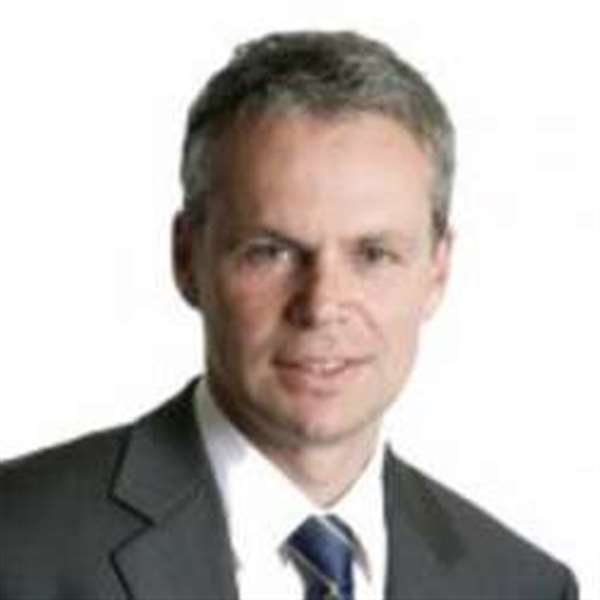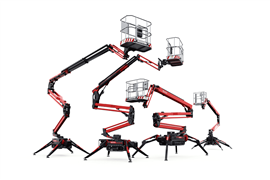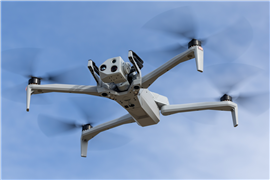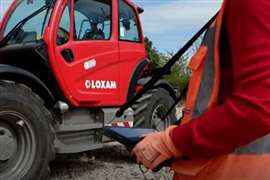Manitou reveals electric product range
24 October 2022
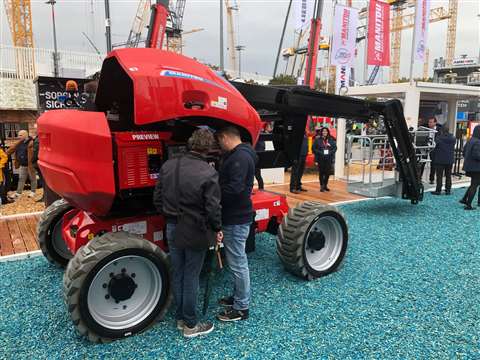 One of Manitou’s new electric boom lifts on display at Bauma 2022. (Photo: KHL)
One of Manitou’s new electric boom lifts on display at Bauma 2022. (Photo: KHL)
Manitou has launched a range of new products at the Bauma 2022 exhibition in Germany, including two additions to its electric articulated boom series, with 16m and 18m models to add to the existing 20m working height 200 ATJ e.
The company has also introduced a safety pack with a number of features, including sensors, lights and a system to show the harness clip is attached to the machine.
All of the articulating booms are currently powered by lead acid batteries and there is also an early attachable combustion engine range extender that can be attached in 15 minutes.
The company also premiered its new electric telehandlers models, which are all lithium battery driven and a range of electric or hybrid power options.
The MRT 2260e and MRT 2660e rotating telehandler models are part of the manufacturer’s VISION+ range and have a loading capacity of 6 tonnes for lifting heights of 22 and 26m respectively.
Offering the same performance levels as Manitou’s internal combustion models, the rotating machines are fitted with a 700V/65kWh lithium-ion battery that is said to ensure optimum productivity, “even in difficult climate conditions like in Northern Europe”.
In an announcement at the construction exhibition, Manitou said that it would introduce a hydrogen powered product at an event in December, adding that the development of hydrogen and how it can be stored on-site is an important part of its plans.
Manitou has already commited the Science-Based Targets initiative, and by 2030 it expects that around 45% of the equipment it sells globally will be low-emission.
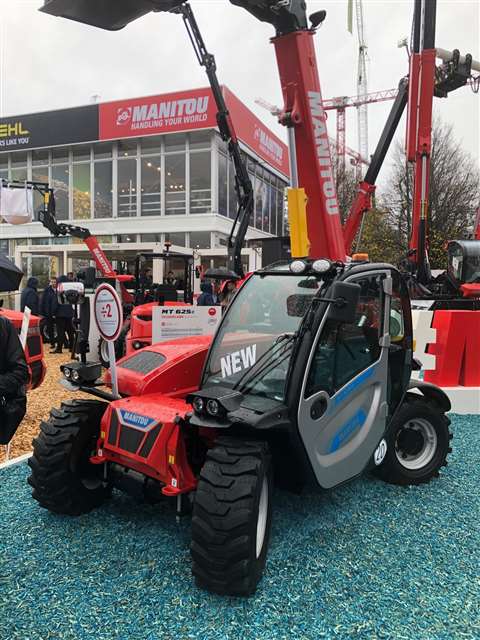 Manitou’s electric telehandler range include one 2.5-tonne telehandler and two 6-tonne rotating telehandler models. (Photo: KHL)
Manitou’s electric telehandler range include one 2.5-tonne telehandler and two 6-tonne rotating telehandler models. (Photo: KHL)
Speaking to Access International magazine earlier this year, Arnaud Boyer, Manitou’s Vice President of Global Marketing & product Development, commented on how the demand for low-emission products in Europe was developing.
He said, “Northern Europe is really where the demand is coming from and in terms of equipment, it is for electric platforms. And we are starting to see some demand, also from the northern European countries, for electric telehandlers.”
According to Boyer, the demand for electric powered construction equipment in the south of Europe is currently not as strong, although this is mainly due to the maturity of the market.
While Boyer thinks the demand will increase in time as the market matures, “what may accelerate this development will be regulation,” he said.
When asked if he thought it would be good for European governments to introduce legislative deadlines to speed up the transition to low-emission construction equipment, the Manitou vice president said, “It depends which way you look at it. If you look at it from a perspective that we need to be emitting less CO2, I would say yes. That should be a drive from the government – I think that is their responsibility.
“Doing it as an incentive would probably be more efficient than to put constraints about legislations.”
However, he added, “The only thing about government is that we need to be careful about the way they write the legislation because sometimes they are not the experts.”
“When you look at the new legislation for cars for example, they have decided in 2035 to stop the use of IC engines. But you could have an IC engine working on a hydrogen machine and emitting no CO2. If we could work with them on trying to establish something then, why not?”
STAY CONNECTED



Receive the information you need when you need it through our world-leading magazines, newsletters and daily briefings.
CONNECT WITH THE TEAM
